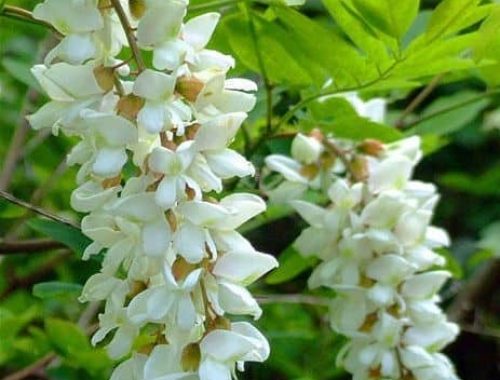2022
NOVEMBER - DECEMBER

DANDELION
Dandelion is not just an ordinary ‘weed’, it is also excellent food and herbal medicine that anyone can find, grow, and put to use.
It has been used in traditional Chinese healing for breast concerns, appendicitis, and stomach problems. Native Americans boil and drink dandelion extract to help treat digestion problems, skin ailments, inflammation, liver injury, kidney disease, and heartburn.
Early Europeans used it to remedy diabetes, high fever, and diarrhea.
Dandelion is a very rich source of beta-carotene which we convert into vitamin A. This flowering plant is also rich in vitamin C, fibre, potassium, iron, calcium, magnesium, zinc, and phosphorus. It’s a good place to get B complex vitamins, trace minerals, organic sodium, and even some vitamin D, too. Dandelion also contains protein, more than spinach.
The Dandelion Herb
1. Promotes and Stimulates Digestion
It acts as a mild laxative that promotes digestion, stimulates appetite, and balances the natural and beneficial bacteria in the intestines. It can increase the release of stomach acid and bile to aid digestion, especially of fats.
2. Prevents Water Retention in the Kidneys
This weed-like superfood is a natural diuretic, which helps the kidneys clear out waste, salt, and excess water by increasing urine production and frequency of urination. This inhibits microbial growth in the urinary system and prevents urinary tract infections.
3. Detoxifies the Liver
Dandelion has been shown to improve hepatic function by detoxifying the liver and re-establishing hydration and electrolyte balance. It also increases the production and release of bile.
4. Boosts Antioxidant Activity
5. Has Been Used In Cancer Research
6. Helps Regulate Blood Sugar Levels
The leaves are especially rich in antioxidants and phytonutrients which combat cancer. Dandelion root extract, on the same note, has shown its ability to induce apoptosis or cell death in prostate and pancreatic cells.
7. Aids in the Management of High Blood Pressure
As a natural diuretic, dandelion increases urination which then lowers blood pressure. The fibre and potassium in dandelion also help regulate blood pressure.
8. Reduces Cholesterol Levels
9. Protects the Gallbladder
10. Fights Inflammation with Its Antioxidant Properties
11. Boosts the Immune System
12. Prevents UVB Damage on the Skin at the Cellular Level
SEPTEMBER - OCTOBER

BAY LEAF
Bay leaf is a nutritious herb that not only adds great flavour and taste to the food, but high in iron, vitamin A, and magnesium. It also helps to give relief from abdominal pain, gastrointestinal infections, flatulence, bloating, constipation and diarrhoea. It may also be used as a diuretic.
Health Benefits of Bay Leaves
• Improves Digestion
• Aids Kidney Health
• Improves Heart Health
• Helps Manage Diabetes
• Alleviates Respiratory Conditions
• Reduces Inflammation and Enhances Wound Healing
• Remedy for Arthritis, Inflammation, and Skin Diseases
• Reduces Stress and Anxiety
• Provides Antimicrobial Protection (including antibacterial and antifungal protection)
• Provides Antioxidants
• Has Anticancer Properties
• Improves Hair Health
• Helps Induce Sleep
• Insect Repellent
CINNAMON AND BAY LEAF TEA

There is a healthy weight loss drink with the goodness of cinnamon and the antioxidant properties of bay leaves. They play a significant role in burning fat effectively and preventing fat accumulation in the body. This drink also improves the nutrient absorption ability of the body, and improves cholesterol levels.
Ingredients
1 cinnamon stick or 1 tsp cinnamon powder
3 – 4 bay leaves
1 tsp honey
8 – 10 dl water (3-4 cups)
Method
1. Bring water to a boil in a vessel.
2. Add bay leaves and cinnamon to the water.
3. Let it cook for about 15 minutes.
4. Strain and add honey.
5. Drink warm, sip by sip
JULY - AUGUST

CLOVER, RED CLOVER
Clover (Trifolium repens); Red Clover (Trifolium pratense)
Clover, especially red clover is foraged for both its medicinal and edible properties. This plant is filled with antioxidants, vitamins, and minerals that can also help boost the immune system and reduce inflammation. It helps to cure bronchitis, cold and flu.
Clover and red clover have been used for hundreds of years basically around the globe and also by Native Americans, to treat and prevent a whole host of common ailments and conditions.
According to folk medicine uses of Clover/Red Clover:
- Immune system booster
- Premature aging fighter
- Fever reduction
- Arthritis
- Menopause
- Gout
- Bronchitis
- PMS
- Asthma
- General cold and flu symptoms
MAY - JUNE

PURSLANE
Purslane is known scientifically as Portulaca oleracea, and is also called pigweed, little hogweed, fatweed and pusley.
It is best known as a weed. However, it is also an edible and highly nutritious green, leafy vegetable that can be eaten raw or cooked. It is loaded with all sorts of nutrients, including omega-3 fatty acids.
It is a succulent plant which contains about 93% water. It has a slightly sour or salty taste, similar to spinach and watercress. It can be used in many of the same ways as spinach and lettuce, such as in salads or sandwiches.
Purslane has a long history of use in traditional/alternative medicine.
It contains:
Vitamin A (from beta-carotene)
Vitamin C
Magnesium
Manganese
Potassium
Iron
Calcium
Small amounts of vitamins B1, B2, B3, folate
copper and phosphorus
You get all of these nutrients with only 16 calories! This makes it one of the most nutrient-dense foods on the planet, calorie for calorie.
While purslane is low in total fat, a large portion of the fat it does contain is in the form of omega-3 fatty acids. It contains two types of omega-3 fatty acids, ALA and EPA. ALA is found in many plants, but EPA is found mostly in animal products (like fatty fish) and algae. Compared to other greens, it is exceptionally high in ALA. It contains 5-7 times more ALA than spinach.
MARCH - APRIL

PINE TREE – HEALTH BENEFITS
Pine trees are more than pretty evergreens to brighten up a winter landscape – they’re used for health around the world.
Pine is used for e.g.
- upper and lower respiratory tract swelling (inflammation)
- stuffy nose
- hoarseness
- common cold
- cough or bronchitis
- fevers
- tendency towards infection
- blood pressure problems
- mild muscle pain and nerve pain
Four Parts of Pine Trees That Benefit Your Health
- Pollen
Pine pollen has been used in Traditional Chinese Medicine for centuries. Pine pollen is an adaptogen, supporting the body’s ability to navigate stress, balancing hormones, promoting better sleep and supporting the immune system. Pollen is primarily taken internally, but in China, the pollen is also applied to the face as a beauty treatment.
- Bark
The soft inner bark can be used immediately or dried for later use in tea or as a topical poultice. Internally, it is used for constipation or haemorrhoids. Externally, either the tea or the inner bark itself (well soaked and pounded) can be applied to sores, burns or haemorrhoids.
Taking a patch of bark off a tree will cause serious damage, so try to harvest bark from branches that you need to prune. Strip off the outer bark and harvest the softer inner bark.
- Needles
Pine needles can be used fresh or dried for later use. Pine needle tea is good to break up stubborn congestion in the upper respiratory tract, support healthy digestion, calm the nervous system and act as a mild diuretic.
The needles can be used for making pine needle syrup, which is very beneficial and tasty; it can be added to a bath to soak away exhaustion or ease arthritic joints.
They can also be used in a steam to relieve sinusitis and congestion.
Gather three to four handfuls of fresh pine needles. Crush them lightly between your hands, and add them to almost 2 litres of water. Let this stand for at least an hour. Put the water and needles in a pot and boil for 15 minutes. Strain and add your pine tea to your bath.
- Buds
Collect pine buds in the spring to relieve chronic bronchitis and tuberculosis and to add to baths for skin ailments and arthritis.
Amazing health benefits of pine needle syrup
-
-
- Pine needle syrup has a magical flavour and smell
-
-
-
- It is an ideal natural remedy for respiratory system problems
-
-
-
- It is abundant in vitamin C and can greatly help heart diseases, varicose veins, skin issues and chronic fatigue
-
-
-
- Also an immune system booster
-
-
-
- Pine needles have a lot of Vitamin A, which is good for your eyesight, hair and skin. It boosts red blood cell production.
-
-
-
- For thousands of years, people reported that pine needles bring clarity and mental clearness!
-
-
-
- It is ideal for fighting depression!
-
-
-
- Pine needles contain antioxidants. They diminish free radicals, which often are causing diseases.
-
-
-
- There is some scientific evidence that pine needle infusion can slow the ageing process.
-
JANUARY - FEBRUARY

WHITE ACACIA TREE AND ITS FLOWERS
(Robinia pseudoacacia)
White acacia tree has many names: black locust, robinia, robinier faux-acacia, honey locust, locust tree, etc. The wood of the tree is very strong and also durable. The wood is therefore used for making fence posts and railroad ties. It can also be used to make an efficient fuel. Due to its quick growth, it is also used by environmentalists to regulate soil erosion.
The flower can be eaten raw. It is also used for making acacia honey and acacia tea, but also for cakes and salads. Acacia flowers are often used as flavour enhancers due to their pleasantly sweet taste. Useful Parts of the Plant: flowers, wood, bark, leaves and seeds.
Healing effects of acacia
- Tea made from freshly picked or dried flower petals reduces catarrhal symptoms, relieves coughs
- Reduces gastric acid overload
- Diuretic when consumed in the morning
- Used for loose stools in the evening only as a cure, not continuously
- As a bath in case of vulvovaginal candidiasis or colds
- For the treatment of stress, insomnia, panic attacks, depression
The healing effects of acacia honey
- For upper respiratory diseases
- Immune system booster
- In case of indigestion
- Detoxifier
- Liver regenerator
- Bone strengthener
Other uses
- The blossoms are known for their diuretic, emollient and anti-spasmodic properties. Some also consume cooked flowers to relieve eye problems.
- The flowers contain components that are converted into quercetin and sugar after hydrolysis. They are even known to contain a chemical which may help to combat tumours.
- The crushed flowers help in healing of the skin after burns. They may be applied to the affected area and left on for a couple of hours.
- Hot tea from white acacia flowers helps to alleviate burning in the stomach and is helpful for people with gastritis; also good for treating cough, sore throat, bronchitis and asthma. Also used as a relaxing remedy for mental fatigue and nervousness.
- The inner bark and root bark of the tree helps to remove waste from the body. The root bark is sometimes chewed to induce vomiting. It may also be placed in the mouth to cure a toothache.
- The fruits, berries and seedpods are used as an analgesic due to their narcotic properties.
- The leaves are known to improve secretion and flow of bile. The juice obtained from the leaves may also help to fight against viruses. The dried leaves may be used to heal burns and wounds.
- The seeds are known to be rich in nutrients. The dried seeds contain nutrients such as calcium, protein, fat, fiber, phosphorus and many other vitamins and minerals in smaller amounts. They are boiled to reduce the bitterness and then consumed.
- The seedpods may also be eaten as they contain a sweet pulp.